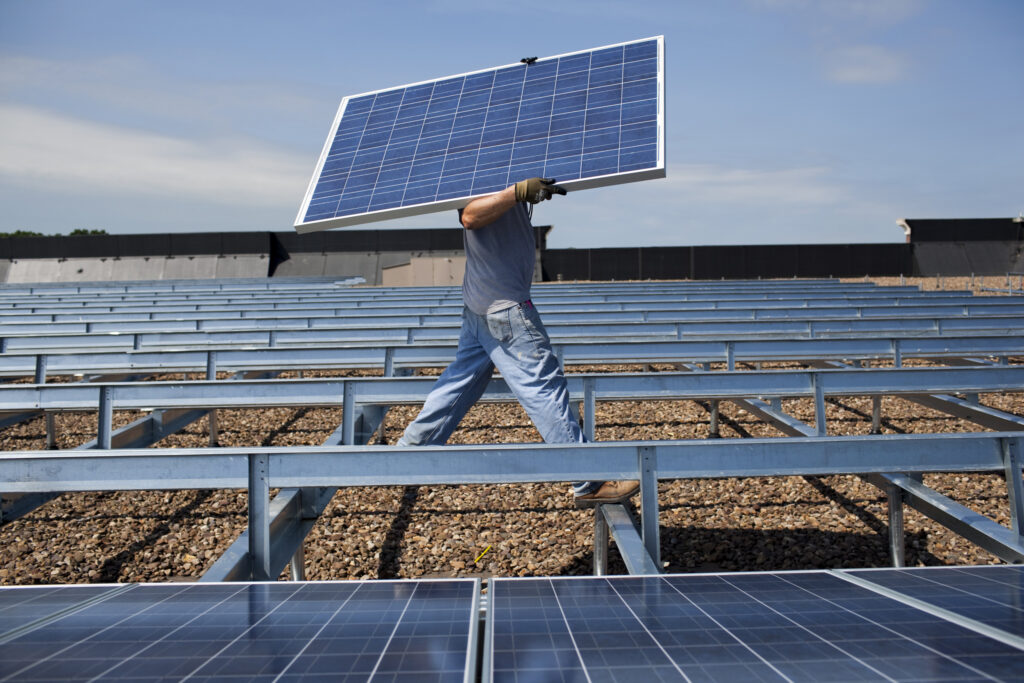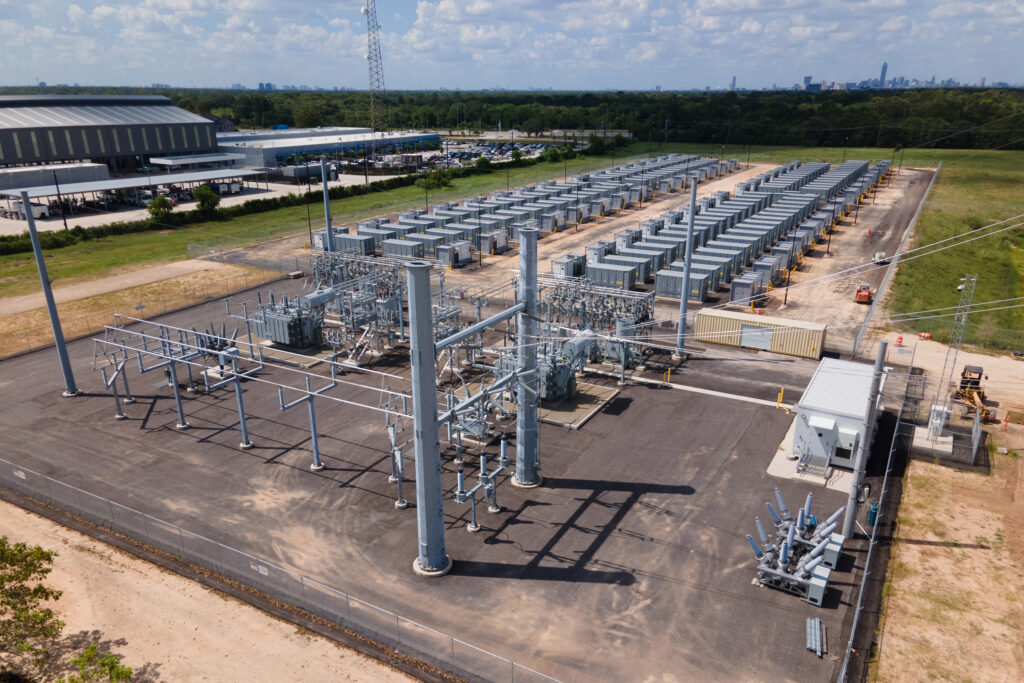The ever-increasing demand for power in Texas—not only from data centers, but due to industrial electrification, manufacturing and population expansion—has outpaced anything the state’s electricity grid operator has seen or managed in the past, according to the Electric Reliability Council of Texas.
Yet even with those demands—and most of what could be one of the state’s 10 hottest summers on record ahead—ERCOT CEO Pablo Vegas predicts the lowest chance of power supply emergencies in years.
Last year, the risk of grid emergencies during the summer peak risk hour ending around 9 p.m. was 16 percent. This year, ERCOT reports, it’s fallen to less than 1 percent.
The new resources added to the grid since last summer’s end, namely utility-scale solar and battery storage, have bolstered reliability as summer power demand ramps up, Vegas said.
We’re hiring!
Please take a look at the new openings in our newsroom.
See jobs
The addition of more than 9,600 megawatts of capacity to the state’s grid since last summer, coupled with conservative operations and reliable management, has produced this result, Vegas said at an ERCOT board of directors meeting this week.
“The state of the grid is strong, it is reliable—it is as reliable as it has ever been and it is as ready for the challenges of extreme weather,” Vegas said. “I feel confident that we are ready for this upcoming summer season.”
Of the new capacity added, 5,395 megawatts came from solar, 3,821 megawatts from energy storage and 253 megawatts from wind power. Kristi Hobbs, ERCOT’s vice president of system planning and weatherization, said the risk of emergency as the sun goes down and Texans continue to pump their air conditioners has been greatly reduced due to the large contributions from solar and battery storage.
“That does put us in a better position to get over those evening ramps as we go into late summer,” Hobbs said.
In the same time frame of the solar and storage additions, there’s been a net loss of natural gas capacity. Retirements, deactivations and derates, or a loss of available capacity, of gas plants resulted in a reduced capacity of 366 megawatts on the grid since last summer.
Last year, solar and battery storage installation led capacity growth within ERCOT, according to the Federal Reserve Bank of Dallas. Renewable energy continues to make up a record-breaking share of the grid’s mix during peak demand. For multiple days in June, renewables met more than half of the state’s peak energy demand.
Nonetheless, some conservative lawmakers unsuccessfully sought to curb the expansion of renewable energy in the state Legislature. Meanwhile, a $5 billion addition to the Texas Energy Fund, a low-interest loan program that incentivizes the development of gas-fueled power plants, passed this session and has been signed into law.
On Thursday, Gov. Greg Abbott announced that the first finalized loan from the fund will support a 122 megawatt gas plant in Colorado County. The facility, backed by the 20-year loan of up to $105 million with 3 percent interest, is set to begin operations in June 2027.
There’s more solar and batteries on the horizon. The bulk of interest in ERCOT’s growing queue of generation interconnection requests comes from the two renewable energy sources, Hobbs said. Of the roughly 400 gigawatts of capacity accounted for in those requests, about 40 percent each are batteries and solar. About 10 percent are wind and a little less are gas.
Short term, the added capacity is beneficial, Vegas said. But in the long run, figuring out how to balance the growing supply resources on the grid with the state’s shrinking number of natural gas power plants continues to be a significant concern.
The sharp drop in chances of grid emergencies is also credited to changes in how the grid operator projects demand. The agency’s staff had previously relied on metrics that many saw as unrealistic, as a state law required ERCOT to consider facilities that had yet to sign power connection contracts in its projections.
These emergency-event risk predictions also run on the assumptions that things happen the way they’re meant to, said ERCOT meteorologist Chris Coleman. They assume, for example, that certain large loads are flexible, turning off when the price for power is too high or when there’s too much demand on the grid and batteries are available during tight supply times.
Above-normal temperatures contribute to the significant load growth ERCOT is expecting. The forecasted summer peak load is 87.5 gigawatts, or 2 gigawatts more than the peak demand of recent years.
The past three summers in Texas have been three of the six hottest summers on record, dating back to 1895. While 2011 was the hottest year, 2023 was the second hottest and 2022 the third. Last summer was the sixth-hottest on record: Austin had 32 days exceeding 100 degrees and San Antonio and Dallas both topped 20.
Climate change is driving more weather extremes, including worse heat, in Texas and around the globe.
Coleman expects 2025 to rank among the 10 hottest summers in state history. This year was slated to rival the summers of 2011 and 2023, but late-spring rain minimized that concern.
As temperatures continue to increase, temperature records that would have been regarded as above normal in the past have now fallen back on the list, creating challenges for ERCOT forecasters when determining what to make of summer temperatures.
“What we consider normal,” Coleman said, “that bar keeps going up.”
About This Story
Perhaps you noticed: This story, like all the news we publish, is free to read. That’s because Inside Climate News is a 501c3 nonprofit organization. We do not charge a subscription fee, lock our news behind a paywall, or clutter our website with ads. We make our news on climate and the environment freely available to you and anyone who wants it.
That’s not all. We also share our news for free with scores of other media organizations around the country. Many of them can’t afford to do environmental journalism of their own. We’ve built bureaus from coast to coast to report local stories, collaborate with local newsrooms and co-publish articles so that this vital work is shared as widely as possible.
Two of us launched ICN in 2007. Six years later we earned a Pulitzer Prize for National Reporting, and now we run the oldest and largest dedicated climate newsroom in the nation. We tell the story in all its complexity. We hold polluters accountable. We expose environmental injustice. We debunk misinformation. We scrutinize solutions and inspire action.
Donations from readers like you fund every aspect of what we do. If you don’t already, will you support our ongoing work, our reporting on the biggest crisis facing our planet, and help us reach even more readers in more places?
Please take a moment to make a tax-deductible donation. Every one of them makes a difference.
Thank you,


















